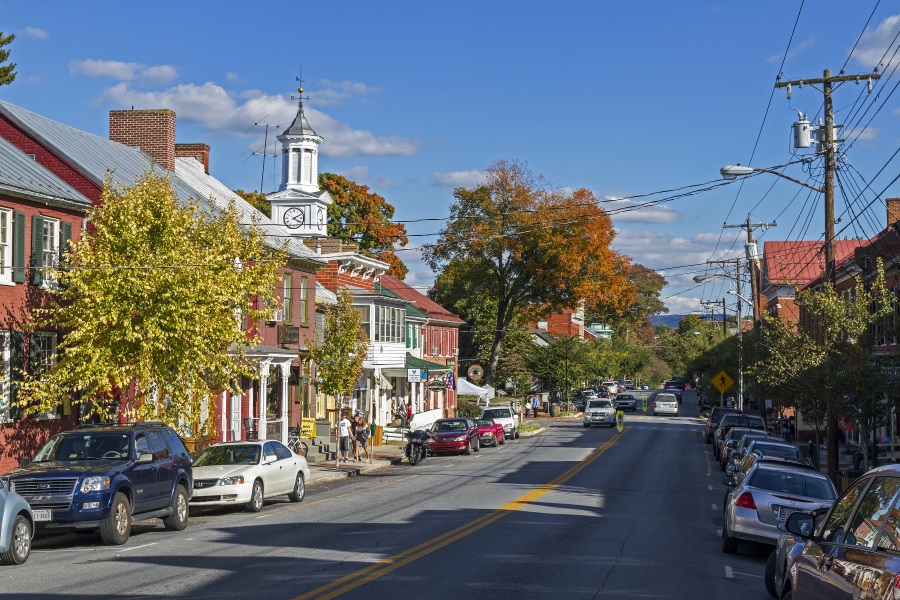SHEPHERDSTOWN, W.VA.: This town of roughly 2,000 permanent residents gets a dose of peace after the students of Shepherd University leave for the summer, but the quiet doesn’t last long. It’s quickly replaced with the bustle of casts, crews, and loyal audience members, who flood the town for the most dramatic event of the year, the Contemporary American Theater Festival (CATF).
This year, the festival’s 25th, the campus is aswarm with theatregoers proudly sporting buttons emblazoned with the year they began coming to the festival; a surprising number at the opening weekend (the fest runs July 10-Aug. 2) bore the date of its inaugural year, 1991. In the intervening years, the oldest town in the state of West Virginia has become a breeding ground for some America’s most contemporary plays—more than 100 new plays since its inception.
And it’s keeping the focus on the contemporary part of its name. At the season kickoff, artistic director Ed Herendeen said, “Tonight we look back and celebrate the past 25 years, but what I am most excited about is looking forward to the next 25.”
This forward focus has helped Herendeen and CATF change the American theatre conversation, bringing new voices and pressing topics to the stage with a festival whose unique geography, mission, and spirit set it apart from other new-play gatherings.
And as those ubiquitous buttons showed, the fest has created loyal patrons, who come from more than 37 states each year not to just see brand new plays, but to fully experience the festival. One group of women in their 70s travels from D.C. every summer, seeing the plays and riding their bikes through the historic town. I met a couple who invested in real estate nearby specifically so they can see the plays multiple times over the course of the festival. Another woman cut a work trip short just so she could catch the first weekend of shows; she wouldn’t miss it for the anything, she told me.
As such, each CATF is a reunion of sorts, not only for many crew members who return yearly, but for faithful audiences, as well. A woman jokingly called this unique group of loyal audience members “shepherds” for their effectively tending and helping to rear cutting-edge plays the playwrights year after year in Shepherdstown. In his 25 years at the helm, Herendeen has cultivated an audience that craves edgy, avant-garde, and topical theatre. What’s more, he encourages them to be more than just bystanders of the development process.
“There is a real appetite with our base to experience the work we are doing, and to be part of nurturing and developing a new play,” said Herendeen.
The motto of the festival is “think theatre.” With lectures on the play’s topics, talkback panels with designers, even Sunday morning breakfast sessions with Herendeen, the audience is actively engaged in the material, and indeed the town is thinking theatre all summer long.
On opening weekend, McMurran Hall on campus was filled to the rafters for a standing-room-only lecture featuring this summer’s five playwrights at CATF. “Writing matters. Writing contemporary new plays matters,” said Herendeen to the crowd. In many ways, as much as the festival has developed its audience, CATF is a festival for the playwrights, who have the opportunity to develop new work in front of that audience, in many cases for the first time.
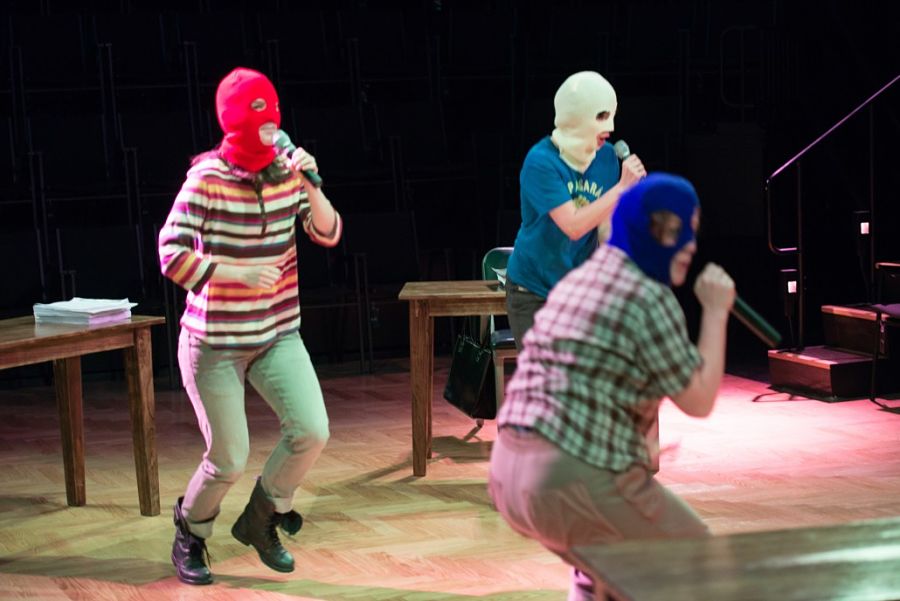
“That very first audience will only happen once,” said playwright Steven Dietz, who this year presented On Clover Road. “My play is new for that little time. Then your bluff is called and your delicious secret is out.”
Playwright Barbara Hammond, who presented We Are Pussy Riot, compared writing plays to reading obituaries: There is some sense of closure in an obituary, but it never fully encapsulates a person’s life, just as a play is never truly finished. Playwright Michael Weller, represented this year by The Full Catastrophe, talked about the process of figuring out a new play with the actors.
“There is no tradition, no way that person did it a certain way, no answer—you have to make it happen,” said Weller. “You need to have a conversation with the audience until it becomes clear.” Dietz went on to say that the plays at CATF can best be described as “fluid, not solid.”
But if the audience understands that the plays are still malleable at this stage, the immaculate sets, costumes, and lighting designs of the productions at CATF tell a different story.
The festival miraculously mounts five fully staged productions in its three performance spaces in rotating repertory. Crew members load in and load out shows many times a day; they light one show while they’re building sets for another show and calling cues for yet another. Cast members also double up and tech multiple shows at once, and bounce back and forth between rehearsing and performing different productions.
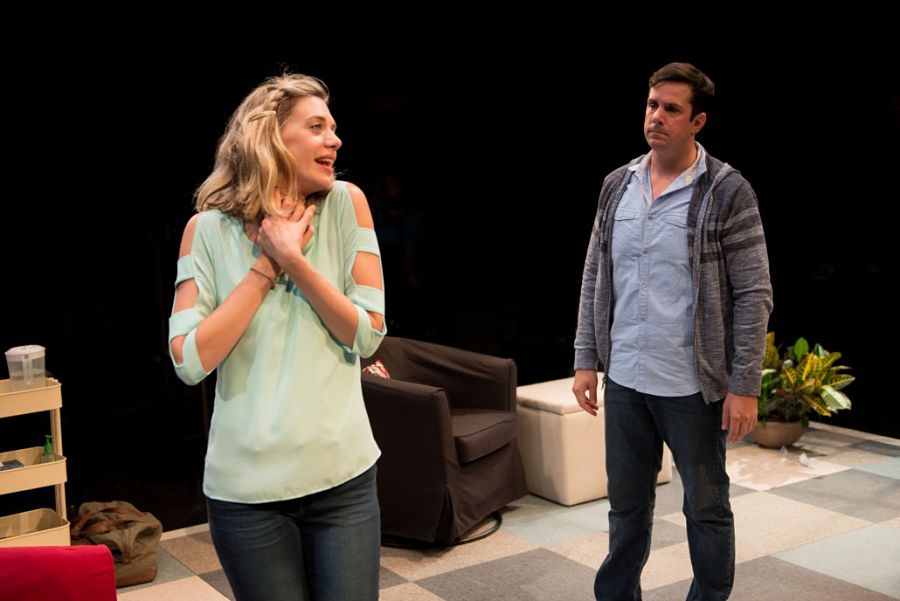
“There is a real hothouse kind of atmosphere to this rep situation, and it is a little bit like the old Humana/Actors Theatre of Louisville model of rep put inside an Ashland, Ore., container—you get the give and take of playwrights and actors acting in several shows,” Dietz said. Being able to see five very different shows with actors who can play a huge range of characters—from a harrowing cult leader, say, to a charismatic linguist—in a single weekend is indeed pretty remarkable. The energy is palpable.
It is a huge undertaking for everyone involved, but the CATF team rises to the occasion. Peggy McKowen, associate producing director and costume designer, described the staff, crew, and cast at CATF as not being as strictly departmentalized as in many other organizations. Everyone willingly signs on to be part of the production of all five shows. So when the costume-heavy production of Sheila Callaghan’s Everything You Touch still had clothes to be completed after the lighting boards had been programmed and the sets were finished, the carpenters traded in their power tools for sewing needles and volunteered their time in the costume shop.
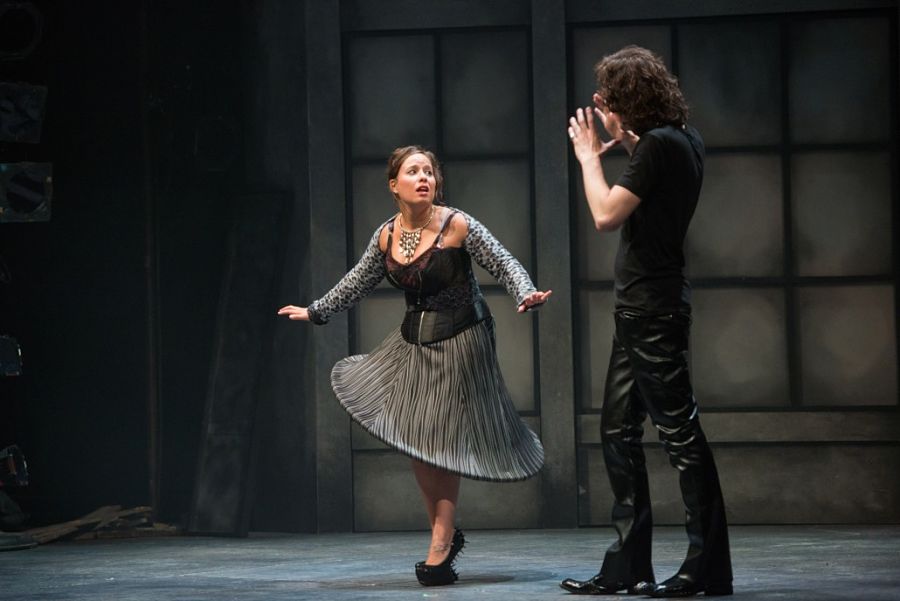
The production teams also play an essential role in the creative process, helping the playwrights fully realize their plays.
“I had a full production team thinking creatively about all the design elements,” said Hammond of We Are Pussy Riot. “In this play, the set, costumes, lights and sound are so important to telling the story. And costume designer Trevor Bowen, set designer Peter Ksander, lighting designer D.M. Wood, and sound designer Elisheba Ittoop all wanted to show me what was possible.”
Not only is the working environment gratifying; the surrounding scenery is, too.
“The geography makes us different,” said Herendeen. “This is an artistic village, and the work never stops. This is a place outside the glare of the early spotlight, a space of safety.” In many ways, the picturesque town is a safe haven, particularly for the playwrights involved. CATF commissioned Hammond to write her play about the Russian activist group Pussy Riot—and gave her a lovely renovated chicken-coop loft to work on it while in Shepherdstown. On their infrequent days off, the cast of Pussy Riot recharge at a nearby infinity pool overlooking the Potomac River. Others recuperate by exploring the historic Antietam battlefield, or walking through downtown Harper’s Ferry between rehearsals and performances.
There is something about seeing theatre in this atmosphere, as well—a place where theatregoers can retreat to a scene of fireflies and stars on their way to local pubs to talk about the shows. The festival resonates through the entire town of Shepherdstown.
“Everybody in every restaurant has gone to see a play and is talking about it, and it is the same five plays,” marveled playwright Johnna Adams, who presented World Builders. “This is an incredibly vibrant theatrical community for a minute that doesn’t exist anywhere else on the planet except at a festival like this.” What’s more, she said, “It is such a charming town; it’s like you’re back in the 1880s.”

Weller said he also relished the way the festival and the town are so closely intertwined.
“Everyone in the town—every shop you go into, when you have breakfast, you have a drink a night—the bartenders go here, the waitresses go here—they all go to see the shows, it’s their theatre. It’s just like going to a movie, it’s like their multiplex. And that’s what I think theatre should be like. It’s very accessible, it’s very available.”
As the quaint cafes, diners, restaurants, and pubs along historic German Street fill with chatter about the repertoire atop the hill, Dietz said that if he really wants to know what people think of his play, he’ll just head to one of the town bars after a show. To spur exciting conversations is precisely what Herendeen hopes for when choosing the CATF fare.
Every year, Herendeen reads hundreds of plays and selects five that really “hit him in the gut” that he feels compelled to produce, sometimes even direct. The result is a rather surprising lineup of shows for a rural town.
“They like kind of dark plays here, challenging plays—they like Neil LaBute a lot, they like Lucy Thurber—authors that have kind of have dark and strong qualities,” said Adams. “That comes through in some of the choices they make. You’ve got torture plays, and gunshots, and language, and nudity sometimes—it can be surprising to find out here in the wilderness in small-town West Virginia. But the audiences expect that, and love that. And there is something really special about a festival celebrating that here, I think.”
This year’s lineup included Dietz’s On Clover Road, a thriller about a mother who hires a private investigator to lure her daughter back from a cult. Adams’s World Builders is about two schizoid patients in a drug trial who fall in love while battling to keep the imaginary worlds inside their heads alive. Weller’s The Full Catastrophe brings light to a failing marriage when an out-of-work linguist comes to live with a family to help patch its marital issues. Hammond’s We Are Pussy Riot tells stories of the persecuted group that the Western media has overlooked. And Sheila Callaghan’s Everything You Touch, the only work this year that had a previous staging, shuttled between periods to tell the story of a fashion designer and his daughter’s body-image issues.
Though the issues raised by these plays evoked difficult conversations, the range of work and styles prevents the playgoing diet from seeming too heavy on the palate. “The plays sort of rub up against each other a little bit,” said Dietz. “And that helps the discussion, instead of the focus being on one play for the whole weekend.”
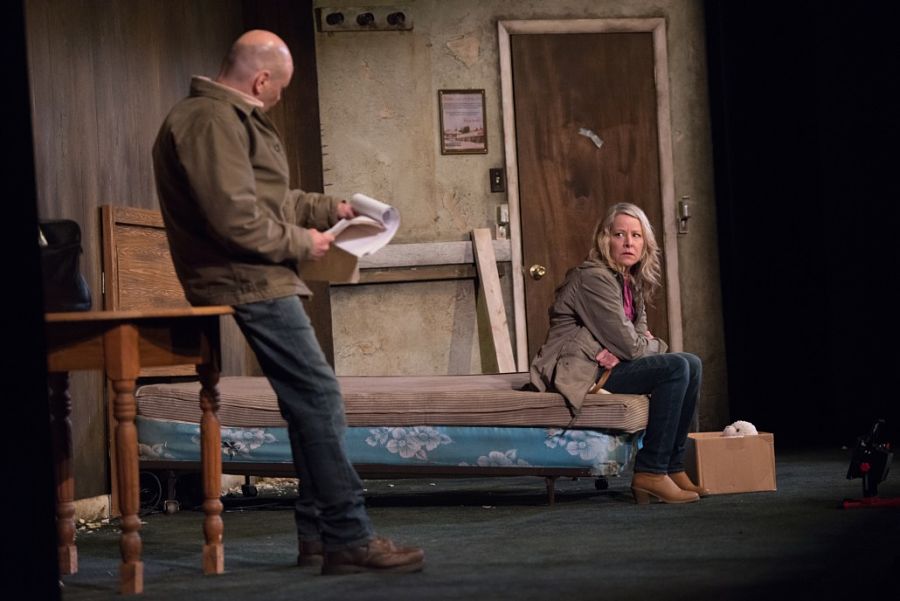
Once the shows are open, many of the designers reluctantly leave Shepherdstown. The interns then take the reins and make sure that the five shows run smoothly for the duration. A new partnership with the University of Iowa’s Department of Theatre Arts will showcase four graduate students in Ruby Rae Spiegel’s Dry Land, which will play for two weekends as part of CATF. Readings of new plays—perhaps foreshadowing future productions next season—are given throughout the course of the monthlong festival.
What happens after CATF? Part of the development process, of course, is to make sure the work has a next step.
“CATF wants playwrights to leave knowing what they want to do next with the play,” said Hammond. “I really want the play to be able to be seen in any country, and to any audience, and have it reflect the world in which the audience lives.” Theatres in London, Kiev, and Sarajevo have already expressed interest in mounting We Are Pussy Riot.
Adams—whose play Gidion’s Knot became one of the most produced plays across the nation after CATF in 2012, and which AT published in December 2012— doesn’t feel that World Builders will have the same sort of trajectory.
“I don’t know that it is going to be at a lot of theatres across the country,” said Adams, though she added, “I didn’t think that about Gidion’s Knot, either, so maybe this one will surprise me, too.” She may be surprised indeed: World Builders is in the process of becoming a National New Play Network rolling world premiere. Dietz’s On Clover Road is also part of an NNPN rollout, and will next head to Indianapolis and San Francisco.
There’s no doubt that CATF casts a powerful spell. This little town in Shepherdstown isn’t just part of the national new-play conversation; it is helping to shape the living literature of the contemporary American theatre. I’ll be proud to sport a 2015 button next year.

